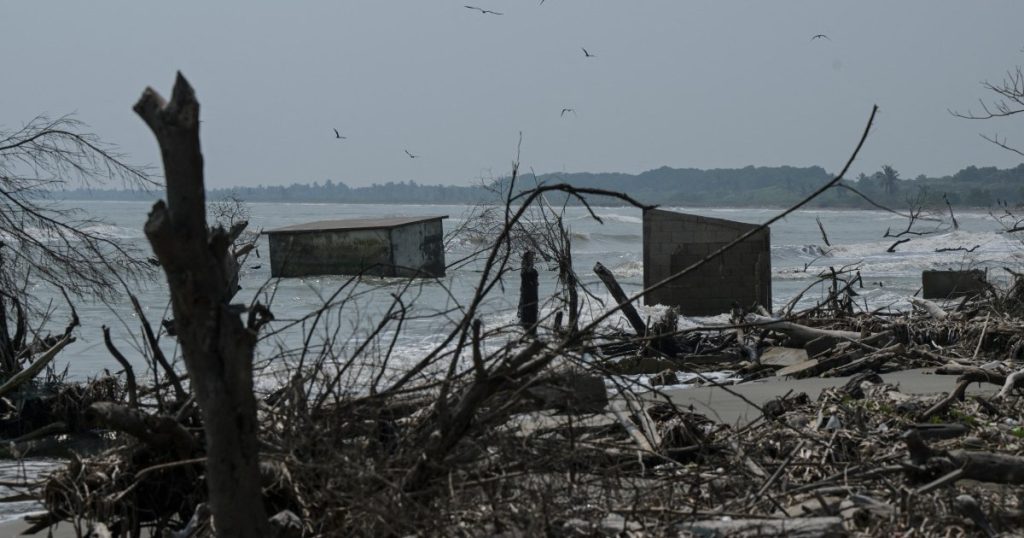Surging sea levels are posing a significant threat to nearly a billion people living in low-lying coastal areas, as they become increasingly vulnerable to storm surges, coastal erosion, and flooding. Data from NASA shows that sea levels have risen at an unprecedented rate in the past century, with about half of the increase occurring since 1993. This has led to a range of impacts including swamped communities, contaminated freshwater, ruined crops, damaged infrastructure, destroyed biodiversity, and decimated economies, particularly in sectors such as fisheries, agriculture, and tourism.
The World Meteorological Organization reported that the average global sea level reached a record high last year, with the rate of increase over the last decade more than double that of the previous decade. The primary cause of sea level rise is attributed to human-induced climate change, with melting land ice and the expansion of seawater as it warms being key drivers. The UN emphasizes the importance of curbing global greenhouse gas emissions to address this issue, as the ocean acts as a major ally in absorbing excess heat but also contributes to sea level rise as water expands.
Many Pacific islands are facing existential threats due to sea level rise and other climate effects, forcing residents to consider relocation. Small islands with low-lying land areas are especially vulnerable, with countries like the Maldives, Tuvalu, the Marshall Islands, Nauru, and Kiribati potentially becoming uninhabitable by 2100. The need for climate adaptation and resilience investments is critical for these nations, as rising sea levels continue to impact their livelihoods, cultures, and very existence on the map.
Cities around the world, including Bangkok, Buenos Aires, Lagos, London, Mumbai, New York, and Shanghai, are also at risk of catastrophic flooding due to rising sea levels. The UN warns of the damage caused by saltwater flooding, including impacts on coastal habitats, fish stocks, agricultural lands, infrastructure, and fresh water supplies. Additionally, coastal communities may experience waterborne diseases, stress, mental health problems, and economic losses. Tourism-dependent countries are particularly vulnerable to damage to beaches, resorts, and coral reefs, which can further exacerbate the negative impacts of sea level rise.
UN Secretary-General Antonio Guterres has emphasized the urgency of addressing rising sea levels, describing it as a “rising tide of misery” that threatens the well-being of communities around the world. The crisis of sea level rise is regarded as a consequence of humanity’s actions, with the need to invest in climate adaptation and resilience highlighted as essential. The growing threats faced by low-lying coastal areas, Pacific islands, and cities underscore the importance of taking immediate action to mitigate the impacts of sea level rise and ensure the sustainability of communities and ecosystems in the face of climate change.













